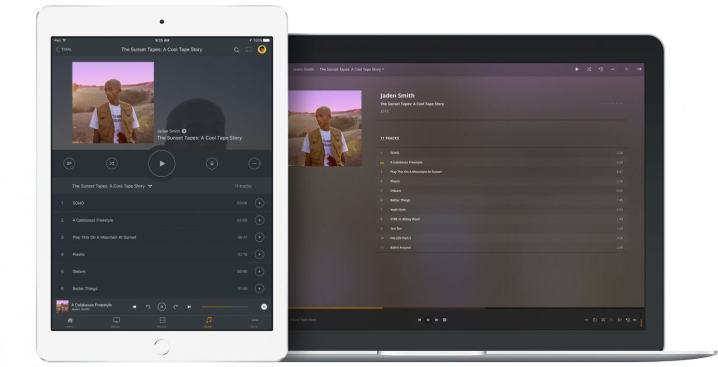
If you’re a movie and TV junkie, we’re betting that the Plex media server platform needs no introduction. For years now, it has been the go-to choice for people who want total control over their media library, and the ability to watch that content on every conceivable device.
But lately, Plex has been getting a lot more serious about other kinds of media as well. It has added podcasts, a capable photo organizer and even a live TV plus DVR option. Last year, the company augmented its music chops in a big way by adding Tidal to its list of supported services. On Friday, April 26, the company announced that integration was expanding even further, including a new “Artist TV” feature that adds music videos to artists’ profiles and lets users fill in missing records in their Plex library using Tidal.
At first blush, this might not seem like a big deal; after all, you can already access Tidal on plenty of devices. For Plex users, however, this means more reasons to subscriber to Jay-Z’s music service. Plus, when you look at how Plex has integrated Tidal, it’s more than just a bolt-on, which is so often the case on other devices and platforms.
In this case, Plex essentially merges your music collection with that of Tidal, thus enabling a host of features that you could previously only find on services like Apple Music, and Google Play Music. There is also a new music video platform, allowing you to watch videos by your favorite artists with just a single click.

The big win for people who want to listen to a certain artist or song, without trying to guess where that music lives, is a universal search. It looks a lot like Sonos’ universal search, which we believe to be the industry standard. Matching results from Tidal and your collection are presented as a unified list, so you can get to the music you want faster. Playlists are similarly enhanced and can contain tracks from any collection you have access to, including Tidal.
Perhaps the most clever thing about the Tidal integration is the recommendation engine, which attempts to guess what Tidal content you’ll be interested in, based on your existing collection of songs. That same background process will show you albums that you don’t already own, from artists that you like. Plex’s artist radio feature which pulls together thematically tied music from your collection, and which debuted on the company’s Plexamp player, is now embedded in all of the Plex apps, and also includes tracks from Tidal.

Of course, none of this is free of charge, but Plex is offering some intriguing discounts for both Plex Pass subscribers and free users alike. In addition to a 30-day free Tidal trial, you can choose two different plans: $10/month Tidal Premium, or the $20/month Tidal Hi-Fi.
These are the same prices for the same plans that Tidal charges directly, but buying them through Plex comes with some great benefits. With Tidal Premium, you get access to Plex’s premium music features — some of which are described above — that are not part of the free Plex experience. With Tidal Hi-Fi, you get a full monthly Plex Pass, which would cost $5/month on its own.
Existing Plex Pass subscribers get a $1/month discount on both plans, but savvy Plex Pass monthly subscribers will no doubt wonder why they should keep paying even $4/month if they can get their service for free with Tidal Hi-Fi. Plex is aware that some folks may indeed cancel and re-subscribe to do this, but it’s a risk it’s willing to take.
There’s just one, tiny catch: Tidal’s hi-fi plan not only provides lossless, CD-like streaming, it also offers a selection of tracks at better-than-CD quality 24-bit high-resolution, via the MQA codec. The trouble is, Plex does not support MQA on any of its apps yet, so listening to Tidal via Plex will not give you high-res audio. As a Hi-Fi subscriber, you still get access to these MQA tracks, but you’ll need to use the Tidal app on a high-res compatible device to get the full range MQA offers.
Here’s hoping that Tidal is just the first of many streaming music services offered through Plex, as the platform continues to evolve.
Updated on April 26, 2019: Added information about new music videos and expanded recommendation features.


